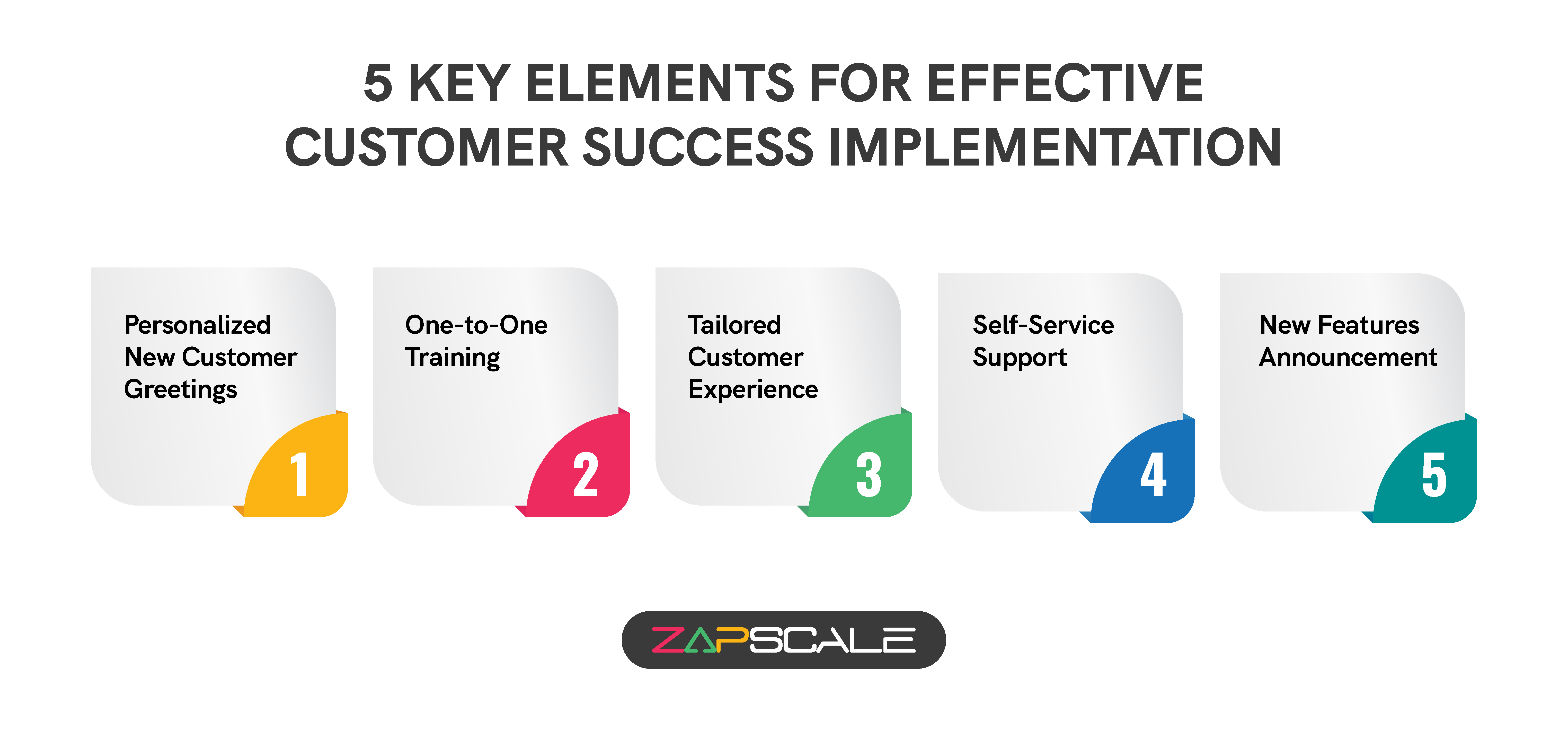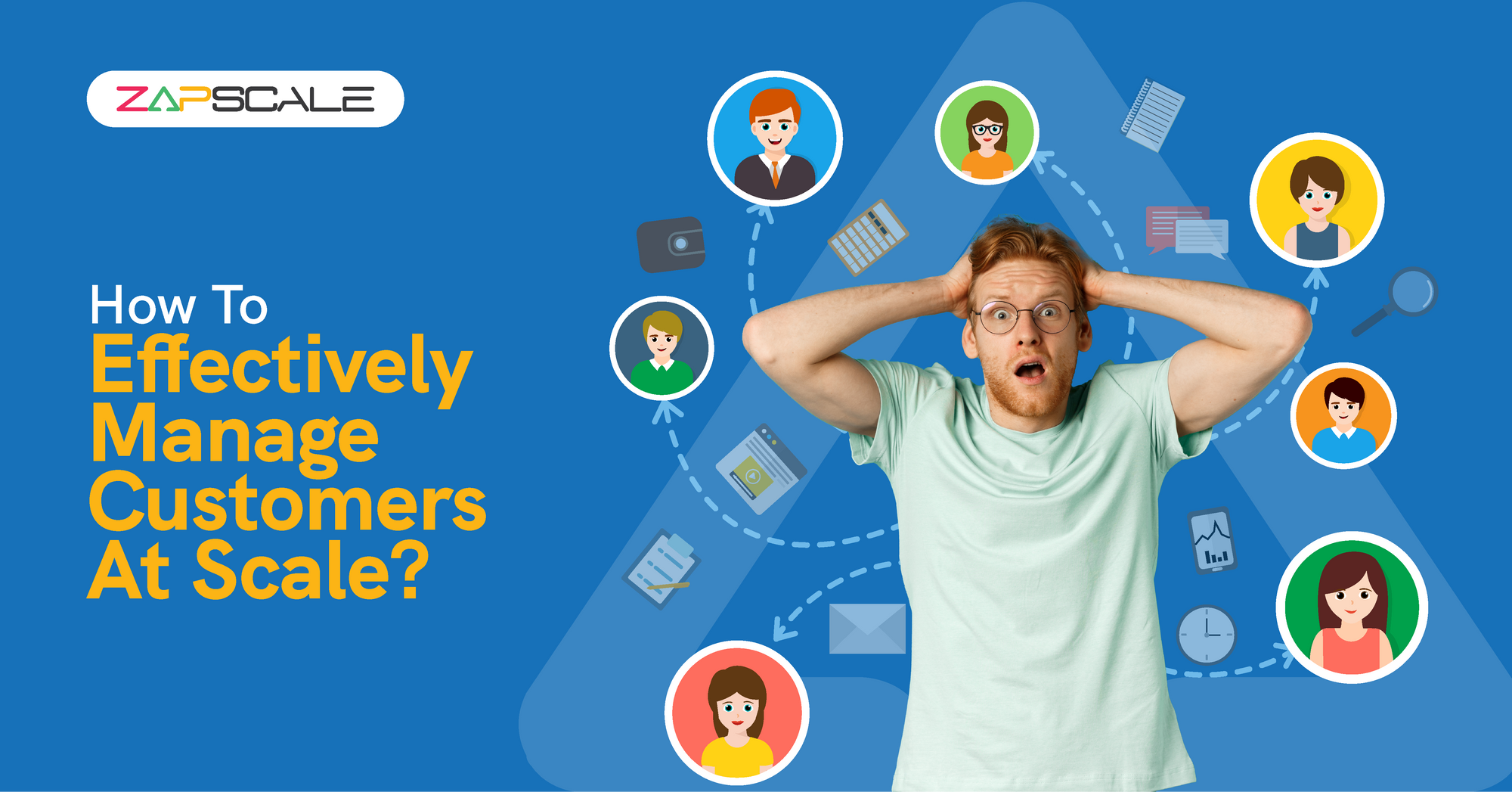CATEGORY > Customer Success Management
Customer Success Process: The Ultimate Playbook for Crafting Winning Results

Having a dedicated process makes everything run smoothly and efficiently. While dealing with customers to ensure that they extract maximum value from your offerings, it’s important to implement a clear-cut framework.
With a top-tier customer success process, you not only enhance the overall customer experience and retention but also ensure long-term growth and SaaS excellence. So, if you wish to learn more about the customer success management process, continue reading further.
Introduction
Customer success is concerned with ensuring that your SaaS solution provides consistent value to customers. It entails helping customers throughout their journey so that they may easily engage with the product.
With customer success, businesses can elevate customer retention, minimize churn, and foster loyalty. Once companies achieve these objectives, they can further enhance customer lifetime value while lowering customer acquisition costs.
Effective customer success techniques assist in anticipating and meeting customer demands, ensuring they get the most out of the product.
This approach not only enhances customer pleasure but also promotes continued growth by developing strong customer relationships and trust. Eventually, Customer success is all about providing a seamless, valued experience that benefits both the customer and the business.
Some typical examples of customer success include seamless onboarding, regular check-ins to fix issues, and gathering feedback to continuously enhance the product and ensure customers attain the highest value from their experience.
Explaining Customer Success Process The SaaS Way
As we all know, customer success is the underlying philosophy that focuses on assisting customers in achieving their objectives and maximizing value. On the other hand, a customer success process outlines structured steps for implementing the idea of customer success, such as onboarding, support, and engagement.

A robust customer success process matters greatly for SaaS businesses that want to secure renewals and survive. Instead of investing resources in acquiring prospective customers, this strategy focuses on retaining existing customers by providing visible ROI from your products.
A well-defined customer success process is essential for building long-term, lucrative customer relationships. It improves customer happiness by providing proactive support and personalized service, resulting in greater retention and customer lifetime value via upselling and cross-selling.
Moreover, delighted customers can become future advocates, passing along referrals and favorable word-of-mouth. A robust customer success strategy enables optimal resource allocation and scalability, allowing businesses to thrive. Finally, having a defined customer success process improves the customer experience and your company's financial performance.
Customer Success Strategy - The What, Why, And How
A customer success process defines how to achieve certain goals, such as increasing customer loyalty, promoting account expansion, or eliminating turnover. It provides a high-level layout for what you want to accomplish and why. Having a robust customer success process template ensures that CS leaders understand the particular tactics and actions needed to hone customer happiness.
Many firms struggle with inefficient onboarding processes and limited user insights. They can get real-time insights into customer health, boost customer segmentation, and automate repetitive processes by implementing a full-fledged customer success process that focuses on automation and data integration. This method frequently results in higher trial user conversions, more effective messaging, and an enormous spike in managed accounts.
Furthermore, enhancing onboarding and lifecycle tracking can result in increased user adoption and more relevant communication, allowing businesses to efficiently extend their customer base without hiring additional employees.
Top Tactics To Devise A Robust Customer Success Process
Developing a successful customer success management process necessitates meticulous planning and execution. Here's how to accomplish the same.

1. Specify Your Goals And Customers
Understand what success means to customers and connect their aspirations with your company's objectives. For instance, if your goal is to increase income, you must consider upselling or cross-selling. Define crystal clear metrics, such as CSAT and CLTV, to assess satisfaction and performance.
2. Consider Customer Segmentation
To customize your strategy, divide customers into categories. Segmentation enables more personalized strategies and increases overall satisfaction and relevance. Use a CRM platform to segment customers more efficiently.
3. Create A Customer Journey Map
Design a Customer Journey Map to visualize each stage, from initial awareness to advocacy. Identifying critical touchpoints and pain points assists in optimizing the customer experience and addressing issues promptly. Doing this mapping assists the customer success team in determining where to focus their efforts and time.
4. Establish A Proficient Customer Success Team
Make a team of experts with a varied set of skills, including problem-solving, empathy, and strong technical knowledge. Invest in ongoing training to keep the team up-to-date while cultivating a customer-centric culture. Ensure they work cross-functionally and establish clear performance metrics to measure progress.
5. Utilize Customer Success Team
Use technology to streamline procedures and improve team efficiency. Invest in customer success solutions that offer features such as health scoring and case management. Many Customer Success tools can even automate regular operations and deliver actionable insights.
6. Leverage Customer Feedback
Continuous progress requires listening and adapting. Gather feedback from customers and staff to determine what works and what doesn't. Use the feedback to make informed modifications to your processes.
Duties Of A Customer Success Managers
Customer success managers are dedicated professionals who ensure customers achieve their objectives using a company's product or service. They offer personalized assistance, resolve issues, promote product adoption, and strive to improve overall customer happiness and retention.
Here’s a snapshot of their major roles and responsibilities.
1. Onboarding Experts
CSMs walk customers through the important elements, aiming for a smooth and successful start. They create and implement effective onboarding processes to guarantee that new customers understand and use the product efficiently.
2. Conflict Resolution
These professionals take proactive steps to address possible concerns before they escalate. They prevent problems by monitoring customer accounts and engagement, ensuring a positive and seamless user experience.
3. Churn Rate Management
CSMs actively evaluate customer satisfaction and engagement to control and lower churn rates. They keep customers engaged by identifying at-risk customers earlier by deploying focused retention measures.
4. Account Expansion Specialist
Customer Success Managers (CSMs) seek ways to grow existing accounts through upselling and cross-selling. They recommend additional features or products that are in line with the needs of customers to achieve high growth and income.
5. Customer Relationship Nurturer
CSMs prioritize developing and maintaining excellent customer connections via regular communication and tailored support. Moreover, they attempt to understand their customers' needs and create unique solutions that bring value.
Top 5 Customer Success Processes For Ultimate UX Transformation And Revenue Boost
What are those 5 elements that help you design a customer success implementation process to bring noticeable results and sustained business advancement? Find out below.

1. Personalized New Customer Greetings
First impressions surely count, even in the SaaS world!
Personalize the user experience by creating a custom-built welcome page or an onboarding video. This technique quickly engages users and establishes a good tone for their experience, making them feel valued and connected from the start.
2. One-To-One Training
Provide individualized training to help users learn more about your product. Use welcome emails to introduce vital resources and promote continued learning. This hands-on approach guarantees that users know how to make the best use of your product.
3. Tailored Customer Experience
Creating a customized onboarding roadmap based on user data enables better product adoption and activation. Furthermore, you must adapt the experience to their specific goals and needs, making the journey more relevant and engaging. This elevates the likelihood of people deriving actual success after using your product or service.
4. Self-Sevice Support
An in-app help center allows users to access assistance resources without leaving the app. Provide a knowledge base, tutorials, and help tickets. This enables users to discover answers quickly, thus, reducing the workload on your support workers.
5. New Features Announcement
It's crucial for SaaS enterprises to constantly update their users about new features and updates. Regular updates encourage users to try new features and keep finding value in your product. Send them weekly newsletters or notifications to ensure they don’t miss important announcements or events.
FAQs
1. How do I determine goals in a customer success process?
Discover what success means to your customers and correlate it with your company's goals, such as growing revenue through upselling or enhancing customer satisfaction.
2. How can providing self-service support improve the customer success process?
Self-service support, such as an in-app help center or knowledgebase, enables users to obtain answers fast without leaving the app, thereby increasing their experience and lowering support staff's workload.
3. How should feedback be incorporated into the customer success process?
You must gather and analyze customer and employee input to find areas for improvement and implement data-driven changes to optimize the entire process.
ABOUT THE AUTHOR
Popular from Customer Success Management
Quality Content,
Straight To Your Inbox!
Subscribe for the latest blogs, podcasts, webinars, and events!

Write a Blog
If you have experience in CS and
a flair for writing, we’d love to
feature you.
Write to us on
hello@zapscale.com





